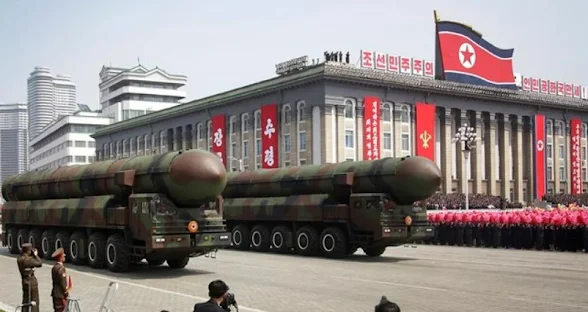 |
| Amount of Nuclear Weapons in the World Increases |
International Military - The number of nuclear weapons in the world will increase in the next decade after 35 years of shrinking. Researchers say the main cause is the global tensions that flared amid Russia 's war in Ukraine .
The nine nuclear powers include: Britain, China, France, India, Israel, North Korea, Pakistan, the United States, and Russia. It has a total of 12,705 nuclear warheads by early 2022, or 375 fewer than in early 2021. That's an estimate from the Stockholm International Peace Research Institute (SIPRI).
Read Also: Russia Threatens to Eliminate Poland over Proposed Deployment of Western Nuclear Forces to Ukraine
The number has dropped from more than 70,000 in 1986, as the US and Russia gradually reduced their large arsenals built up during the Cold War.
But, say SIPRI researchers, this era of disarmament appears to be coming to an end and the risk of nuclear escalation is now at its highest in the post-Cold War period. "Soon, we will get to the point where, for the first time since the end of the Cold War, the number of global nuclear weapons in the world could start to increase," Matt Korda, one of the report's co-authors, told AFP Monday. 6/2022).
"It's really dangerous territory," he explained. "After the 'marginal' decline seen last year, nuclear arsenals are expected to grow over the next decade," the SIPRI report continues. During the war in Ukraine, Russian President Vladimir Putin on several occasions threatened to use nuclear weapons.
Read Also: Chinese Defense Minister Wei Fenghe Calls Nuclear Weapons for Self-Defense
Meanwhile several countries, including China and Britain, are officially or unofficially modernizing or upgrading their arsenals. "It will be very difficult to make progress on disarmament in the years to come because of this war, and because of the way Putin talks about his nuclear weapons," Korda said. This worrying statement prompted many other nuclear-armed countries to think about their own nuclear strategies," Korda said. he added.
According to SIPRI, despite the entry into force of the UN nuclear arms ban treaty in early 2021 and the five-year extension of the US-Russia “New START” agreement, the situation has been deteriorating for some time. Iran's nuclear program and the development of increasingly sophisticated hypersonic missiles from several countries, among others, have raised concerns.
The decline in the overall number of nuclear weapons has come before as the US and Russia dismantled retired nuclear warheads. However, the number of operational nuclear weapons has remained relatively stable. Moscow and Washington alone account for 90 percent of the world's nuclear arsenal. Russia remains the largest nuclear power, with 5,977 warheads as of early 2022, down 280 from last year, either deployed, in stock or waiting to be dismantled.
More than 1,600 warheads are believed to be in service soon. Meanwhile the United States has 5,428 warheads, 120 fewer than last year, but more deployed than Russia, at 1,750.
In terms of overall numbers, China is third with 350, followed by France with 290, Britain with 225, Pakistan with 165, India with 160 and Israel with 90. Israel is the only one of the nine that does not officially admit to possessing nuclear weapons. .
As for North Korea, SIPRI for the first time said that Kim Jong-un's Communist regime now has 20 nuclear warheads. Pyongyang is believed to have enough material to produce about 50 nuclear warheads.
Read Also: India Successfully Tests Nuclear Capable Agni-4 Ballistic Missile
